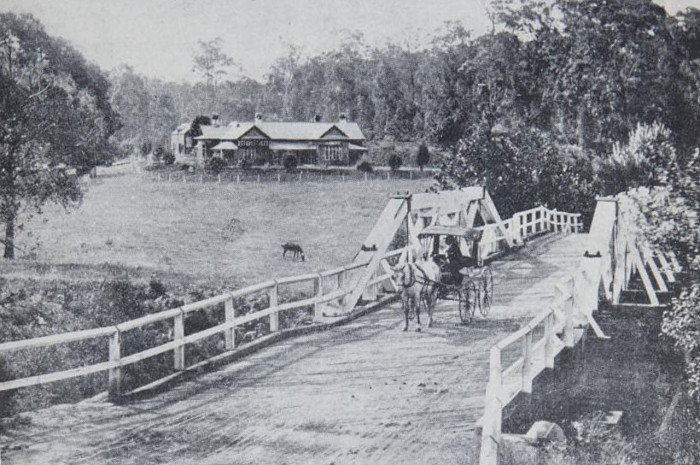South Coast NSW History Story
BOMADERRY
Bomaderry, on the north side of the Shoalhaven River, became part of Alexander Berry’s Shoalhaven Estates after he had built a road to it in 1858 from his Coolangatta Estate. The township was formally established in 1882.
Its name comes from an Aboriginal word for "fighting ground" or "running water".
After the death of its then-owner, David Berry, in 1889, the Shoalhaven Estate was divided up, and in 1892 hundreds of blocks of land were offered for sale. These were to the west of the railway line from Kiama – an extension of the railway line from Sydney to Kiama - that opened in 1893. The opening of the railway line spurred Bomaderry’s growth, attracting several significant businesses.
In 1900, Denham Bros. built a bacon and ham factory. A condensed milk factory opened in 1901, originally near the railway station before later being moved to the bank of the Shoalhaven River near Bolong Road. And, in 1912, the Nowra Co-op Dairy Company established a milk depot at Bomaderry.
More recently, a £10-million paper mill was opened at Bomaderry in the 1950s. It produced security-grade paper used in documents such as passports and birth certificates. It operated until August 2015, by which time it was unable to compete with cheaper imported papers. Its land and buildings were sold to the Manildra Group that operated nearby.
In the early 1970s, Manildra became a major employer in Bomaderry, establishing a starch plant and a glucose plant to extract starch and gluten from flour. In 1991 it commenced ethanol production at Shoalhaven Starches. Manildra built a railway siding from near the Bomaderry railway station to its works to streamline transportation of its products.
The town also housed a Bomaderry Aboriginal Children's Home. This was established in 1908 by the United Aborigines Mission, one of the largest Christian-based missions in Australia, to provide a place for Aboriginal orphans and others in need of care who were under the age of 10. (Once the children reached the age of 10, they were returned to the care of the Aborigines Protection (Welfare) Board and were often sent into domestic service.) It was the first home to be established for Aboriginal children in NSW and became the longest-running Aboriginal Children’s Home in NSW. Up to 47 children were housed in dormitories or cottages at the home. The Bomaderry Aboriginal Children’s Home closed in 1988.
Photograph: Lynburn, one of the first houses in Bomaderry, circa 1900. It was built in 1895 for Jane Morton, the widow of Henry Gordon Morton, a manager of the Shoalhaven Estate. The road over the bridge in the photo is now the Princes Highway where it crosses Bomaderry Creek.
